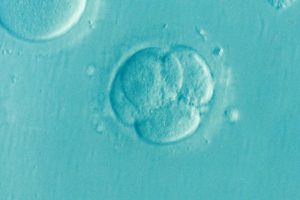
Basal Body Temperature (BBT)
Your basal body temperature (BBT) is your body’s lowest temperature when you are completely at rest and it can provide insight into your fertility. It is advisable to use BBT charting along with ovulation prediction kits (OPKs) and checking the consistency of your cervical mucus (CM).
During your monthly cycle, your BBT will fluctuate but it does so in a pattern. Typically, from your luteal phase and the first day of menstruation, you will have a higher BBT that decreases as the follicular phase progresses and ovulation nears. Once ovulation has occurred, your BBT will increase as progesterone, which aids in the thickening of your uterine lining, is secreted by your ovaries. If you become pregnant, your BBT will stay elevated until around the end of your first trimester.
Some women notice a dip in their BBT right before ovulation, with either a sudden or a steady increase once ovulation has occurred. Oftentimes however, women experience a gradual decrease and increase in BBT.
Generally, a woman’s BBT will increase around 12 to 24 hours after ovulation – but by that time, the egg has already begun to deteriorate and the fertility window has passed. Therefore, while BBT is helpful in confirming ovulation has occurred, it is not a stand-alone method of predicting ovulation.
After several months of recording your BBT, you will begin to recognize the patterns of your temperature fluctuations – coupling BBT with other methods of cycle tracking (checking your cervical mucus and using OPKs to monitor your LH surge) will ultimately help you pinpoint your most fertile days each month.
A woman’s most fertile days are typically within five days leading up to ovulation, with peak fertility reached the day before and the day of ovulation.
If you decide to use BBT to track your monthly cycle, it’s important that you purchase a thermometer that specifies it is for basal body temperature monitoring. A regular medical thermometer is not the same, as they are not as sensitive nor as accurate for recording the minor fluctuations of your BBT. Fortunately, there are several stand alone BBT thermometers and monitoring bracelets on the market to choose from.
Here are the most important things to keep in mind if you decide to use BBT to help track your cycles:
- You must use a BBT thermometer
- You must check your BBT immediately upon waking in the morning
- You must remain as still as possible (no talking, no sitting up, no going to the bathroom, no drinking that glass of water by your bed) before checking your BBT
- You must check your BBT around the same time every morning
- You must have had at least 4 hours of sleep prior to checking your BBT in the morning
Factors that can impact and skew your BBT results:
- Moving around or talking before checking your BBT
- Drinking alcohol the night before
- Smoking the night before
- Medications
- Inconsistent sleep
- Extreme stress
- Changing the temperature where you sleep (ie: via thermostat or electric blanket)
The best way to track your BBT:
- Make sure you are using a BBT thermometer
- Keep your BBT thermometer within easy reach by your bed (nightstand, table, etc)
- Make sure you get at least 3 hours of uninterrupted sleep
- Set your alarm to wake you at the same time every morning
- Immediately check your temperature upon waking, before doing anything else
- You can check your temperature orally, vaginally, or anally but choose one and be consistent
- Plot your BBT on a chart, keeping a record so you can compare months and identify your cycle’s patterns
- If you are sick or ingested alcohol or medication, make a note of that on your BBT chart
To help you track and better understand your monthly cycle, we have created a very handy pair of charts free for your use to download and print – it’s great for hole punching to keep in your daily planner (may need folding) or for your TTC journey journal!
Understanding Your Monthly Cycle
Cycle Tracking
» Basal Body Temperature (BBT)
Cervical Mucus (CM)
Ovulation Prediction Kits (OPKs)
The Two Week Wait
Understanding Your Monthly Cycle
Cycle Tracking
» Basal Body Temperature (BBT)
Cervical Mucus (CM)
Ovulation Prediction Kits (OPKs)
The Two Week Wait
Browse all Articles:
Trying to Conceive
Pregnancy
Motherhood
Self Care
SingleMomsByChoice.org is run by single moms by choice for single moms by choice, dedicated to helping educate, enlighten and empower women who are thinking about or who have decided to have a child “on their own” through donor insemination, egg or embryo donation, adoption or other assisted means.


